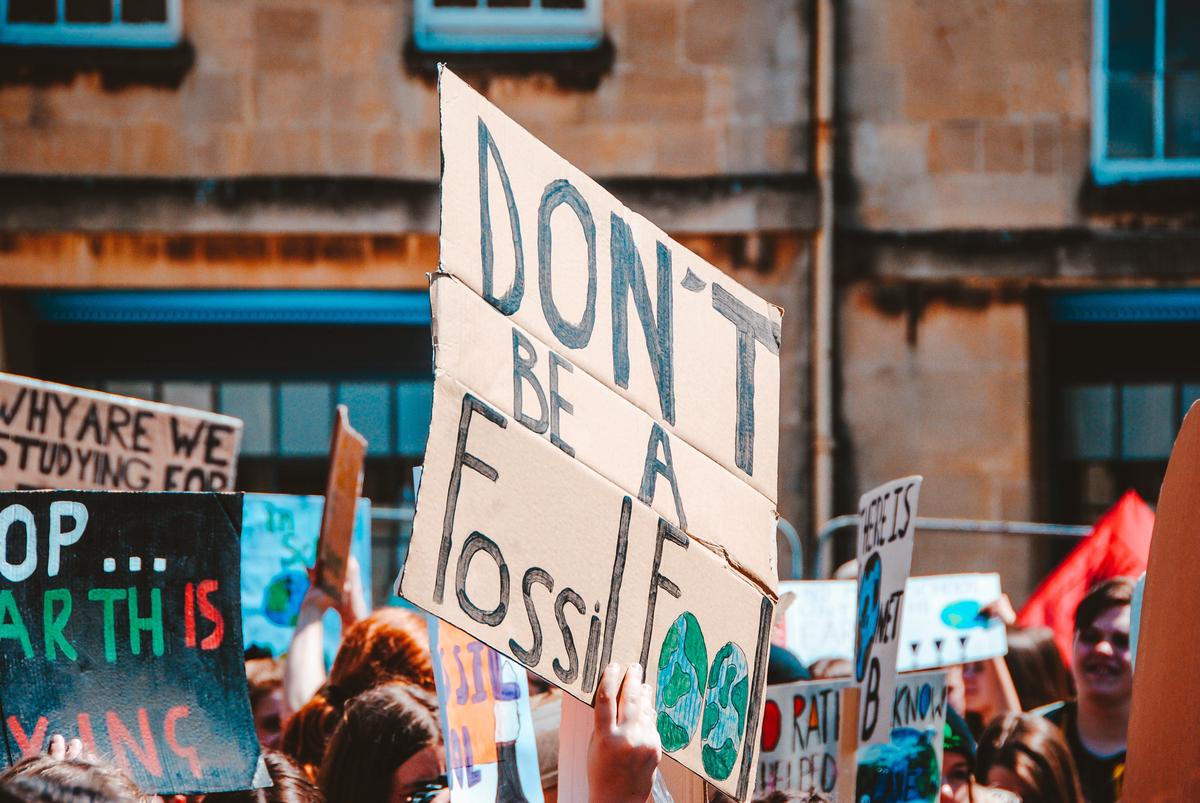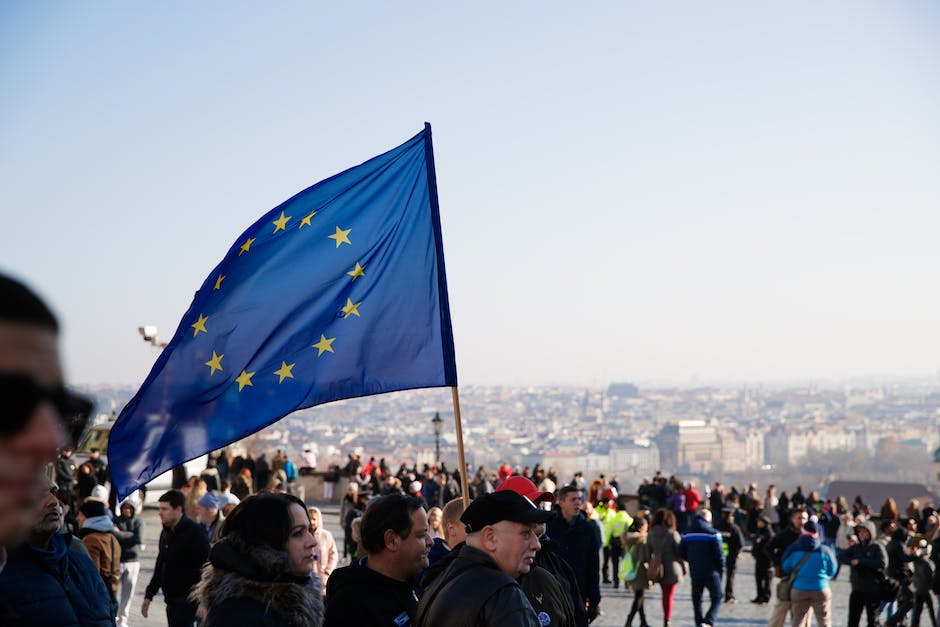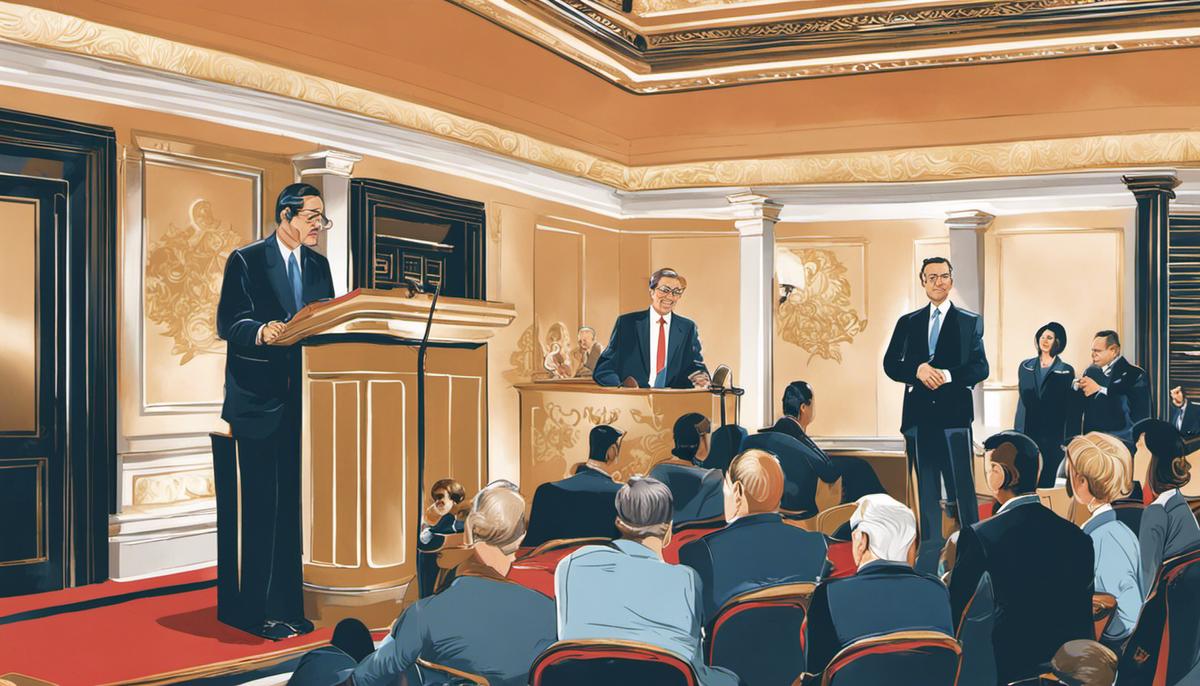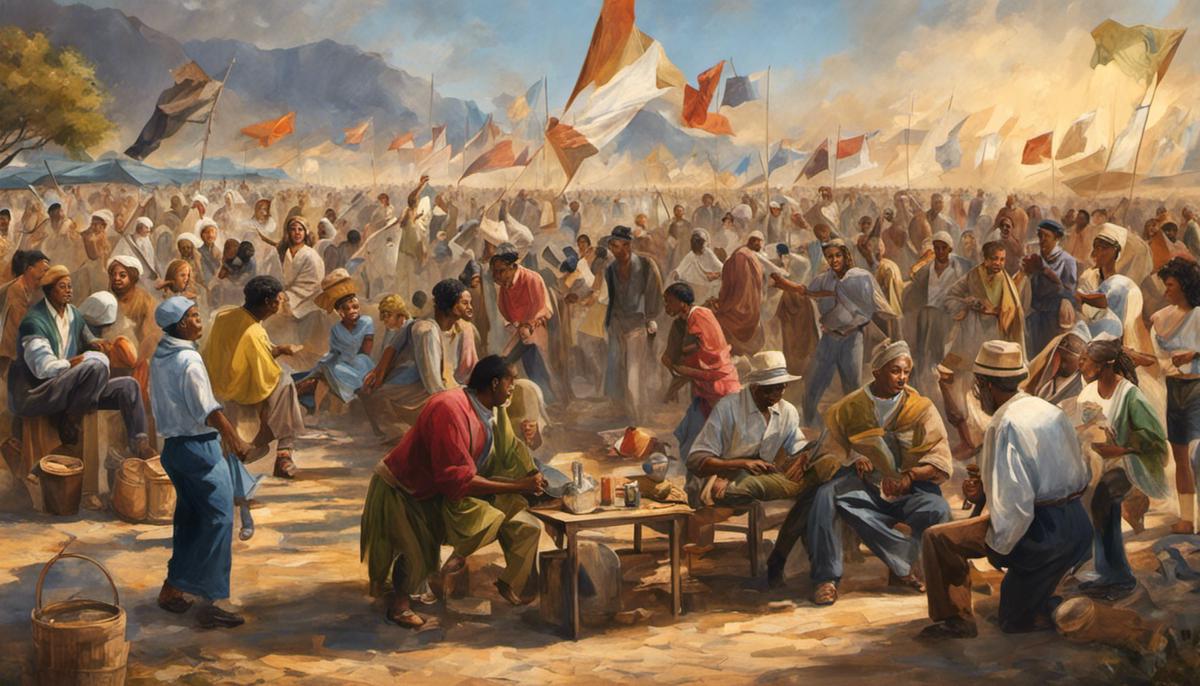In the democratic fabric of society, the mass voice, often referred to as ‘public opinion’, is a key factor that can sway, shape, and sometimes even dictate political and administrative decisions. Encapsulating diverse influences, including social, economic, political, and cultural, public opinion demonstrates the collective consciousness of the people, manifesting their needs, desires, and discontent. As a fundamental pillar of a representative democracy, it serves as the guiding force for elected leaders to align policy changes that reflect the public’s aspiration. At the same time, it brings forth the responsibility of governance to incorporate public interests while grappling with the realities of policy-making. This examination delves into the intricate process of converting public opinion into policy changes, from understanding the roots and mechanisms to exploring real-life case studies and grappling with the implications and associated challenges.
Table of Contents
Understanding Public Opinion
Public opinion is a complex and multi-dimensional construct, typically defined as a collective viewpoint or attitude shared by a group of individuals on various topics, events or actions. It is malleable, susceptible to change, and significantly influenced by a plethora of factors. This article aims to dissect components of this enigmatic concept and shed light on the key factors shaping it.
It is important to note that public opinion is never uniform. Although presented as a broad consensus or an average view on a subject matter, it invariably encompasses a spectrum of beliefs and attitudes within its fold. The perception of such collective agreement is derived from means such as surveys and polls, which aim to measure and quantify these viewpoints on a mass scale. The methodological vigor and design of these research tools contribute to their reliability in capturing an accurate snapshot of the public’s perspective.
Moreover, the role of media in cementing and fostering public opinion is critical. As a conveyor of information, the media acts as a “gatekeeper,” with the power to determine what information is made readily accessible to the public. It sways public opinion by framing issues and controlling which stories get attention, thereby highlighting its power in shaping the collective consciousness.
Societal factors, including cultural norms and values, also aid in the formation of public opinion. These norms and values are largely influenced by historical, political, and social contexts, dictating what is acceptable or intolerable in a society.
Political climate significantly affects public opinion as bureaucratic policies and political leaders have the power to mold and channel public sentiment. Elasticity in public opinion often reflects ongoing political changes, campaigns, and the philosophies of dominant political players.
Personal characteristics such as age, gender, socio-economic status, and educational background play a vital role as well. Differences in public opinion frequently mirror demographic variations, underscoring the significance of individualistic characteristics in the opinion formation process.
Psychological elements and cognitive biases cannot be overlooked. Framing effects, confirmation biases, and heuristics often cloud judgments, reinforcing personal beliefs and attitudes instead of generating a rational evaluation of information, hence influencing public opinion.
Importantly, it must be acknowledged that public opinion is not static but a dynamic entity, perpetually evolving, and transforming under the influence of these dynamic factors.
Therefore, a comprehensive understanding of public opinion, its intricacies, and mechanisms of change requires a multidimensional approach. It is crucial to recognize the interplay of individual, societal, and political aspects shaping the collective sentiment. This understanding is key to effectively capturing the pulse of the public and predicting shifts in this fascinating landscape of collective human attitudes and outlooks.

Photo by helloimnik on Unsplash
Public Opinion and Democracy
The Interweaving of Public Opinion and Democratic Governance: An Examination
Within the premise of democratic governance, public opinion serves as a precipitating force, vital to policy-making and the implementation of governance. The intrinsic nature of democracy positions public opinion not merely as a reflection, but as an embodiment of public will.
Moving beyond the characteristics and influences of public opinion, it is necessary to examine its relationship with democracy. Fundamentally, public opinion is the underpinning ethos behind democratic governance, which values the majority’s viewpoints as the representative driving force in policy formulation and regulation. While this majority rule is foundational to the democratic system, the principle of minority rights should not be overlooked, serving to balance the scale of engagement.
The manifestation of public opinion in democratic governance extends to electoral processes. Candidates tune their messages and policy platforms to resonate with what they perceive as public sentiment, in order to garner votes. Subsequently, elected officials, conscious of the need for re-election, often shape their legislative behaviors around the prevailing public opinion.
Additionally, the judiciary—although seemingly removed from the vagaries of public sentiment—is not immune from the influences of public opinion. Courts are often pressured by public opinion in high-profile cases, subtly shaping the course of rulings. The relationship between public opinion and judicial decisions is nuanced, reflecting how intertwined public opinion is with all aspects of democratic governance.
Public opinion also reinforces the system of checks and balances intrinsic to democratic governance. The mass media is a critical element in gauging public sentiment, scrutinizing governmental actions, and instigating accountability. This mechanism of check and balance is furthered by the rise of social media platforms, granting the public greater power to voice their opinions and thereby influencing policy decisions.
Public deliberation is yet another interface between public opinion and democratic governance. Deliberative democracy, which promotes open discussions and debates among citizens, aids in opinion formation and strengthens participatory democracy. This deliberative dialogue enriches the democratic process and enlivens the values of tolerance and diversity embodied in democratic governance.
Lastly, public opinion shapes societal norms, laws, and ethical practices, through its role in the formation and development of social, cultural, and even educational policies. The development of these policies is naturally infused with public sentiment, surface testing the sentiments and re-enforcing them through regulations.
While complexity is inherent in the relationship between public opinion and democratic governance, there is no doubt that these two cornerstones are intrinsically intertwined. Public opinion both reflects and shapes democratic processes, accentuating its significance as an invaluable currency in the governance realm. Understandably so, for in a democratic system, the power truly does rest in the hands of the people—the originators of public opinion.

Mechanisms for Translating Public Opinion into Policy Changes
Efforts to uncover the mysteries of public opinion’s pathways to enact policy changes are crucial in various disciplines – sociology, political science, psychology, and more.
Building upon the outlined foundation, this article elucidates key interconnected pathways through which public opinion precipitates policy shifts.
A paramount pathway initiates with public opinion impacting electoral proceedings. It is precisely here that the power of collective sentiment becomes apparent: the electorates’ beliefs and attitudes play a crucial role in the selection of political representatives. Those elected subsequently shape public policy, recognizing that failure to resonate with the public’s expectations often results in a shortened tenure. This tangible manifestation of public opinion, via voting, epitomizes direct public-wielded influence over policymakers.
Exploring further, public opinion considerably influences judicial decisions. Legal scholars often discoursed on the ‘judicialization of politics’, arguing that courts are susceptible to the public’s collective sentiments. A classic example is the evolution of judgments on civil rights issues, reflecting shifts in public opinion over time.
Beyond direct channels, vital indirect mechanisms exist. Public opinion fuels social norms, laws, and ethical practices which, in turn, influence policy. For example, policy decisions regarding contentious issues such as abortion, same-sex marriage or euthanasia, often parallel prevailing societal norms. As these norms shift, so typically does the policy.
Moreover, the media and increasingly pivotal social media channels, often considered a lens to view public opinion, hold a reciprocal relationship with it. They reflect, shape, and at times even activate public opinion, indirectly influencing policy through the opinions they propagate. Media outlets’ political inclinations often modulate public perceptions, subtly shaping policy indirectly via public opinion.
Public deliberation is another pathway for public opinion to sculpt policy. Here, individuals or groups reflexively discuss societal issues, making sense of complexity, trading assessments, and collaboratively generating opinions. Research substantiates a strong correlation between deliberation-induced public opinion and public policy changes, particularly in a functioning democracy.
Last but not least, public opinion’s influence on democratic practices should not be underestimated – arguably, the two are inextricably entwined. Democracy, in theory, is a government “by the people, for the people,” with leaders expected to discharge every grain of their authority as per electorates’ wishes. Hence, robust public opinion deeply embedded in democratic processes often ingeniously charts the course of policy changes in democratic settings.
In conclusion, the pathways of public opinion influencing policy changes are intricate, manifold, and mutually reinforcing, involving direct influence on decision-makers and indirect shaping via societal norms, deliberation, media, and democratic processes. Recognizing each layer of these nuanced interactions is crucial to comprehend and leverage public opinion’s colossal power in driving policy change.

Case Studies of Public Opinion-Driven Policy Changes
Illustrating the tangible impact of public opinion on concrete policy action is a complex endeavor. The path from the assertion of an opinion to the implementation of policy is not a direct linear journey, but rather a nuanced dialogue filled with twists, turns and multiple actors.
Public opinion, encapsulating both individual and collective perspectives, acts as a powerful force within a democratic society, informing various domains of governance and policy-making. It holds a critical function, offering a metric capable of directing the aims and contours of policy decisions.
Elections, a quintessential feature of democratic societies, serve as a vivid illustration of the role of public opinion. Votes cast in favor or against political entities during the election showcase public opinion at a grand scale. The repercussions of public sentiment during elections directly affect policy-making. Depending on their political stance, winning parties fashion and tailor policies in line with their voters; a tangible echo of public sentiment.
Within the judicial domain, public opinion, albeit in a more nuanced fashion, plays a vital role. Softening or hardening of policy stances towards issues such as sentencing guidelines, capital punishment or drug legalization, reflects shifting public sentiment as captured in surveys and public perceptions.
The influence of public opinion often transcends the corridors of policy halls and ventures into societal norms, laws and ethical practices. For instance, increased public awareness and concern towards LGBTQIA+ rights have resulted in a progressive legislation change across various jurisdictions. Similarly, stringent campaigns towards environmental conservancy have led to the emergence of ‘green’ policies across the globe, reflecting heightened public sensitivity towards the environment.
The advent of media and social platforms has revolutionized how public opinion shapes policy. These platforms have become formidable amplifiers of public sentiment, providing a platform to galvanize public support or opposition against particular policies. Social media campaigns advocating for stricter gun control laws or challenging immigration policies exemplify the increasing strength of digital public opinion dialogues. In an increasingly digital world, the interplay between media, social media, and policy change remains a vibrant area calling for scholarly attention.
Public deliberation underscores the continued vitality of democratic societies. It is here that public opinion is shaped, challenging prevailing policies and inciting potential policy change. Whether it is in community meetings, public forums, or widespread protests, public deliberation represents a significant phase where public opinion translates into policy discourse.
Succinctly, tracing the impact of public opinion on real-world policy changes is a complex task. Given the dynamic interconnections between public opinion, media, political climate, and societal factors, researchers need to adopt a multifaceted and nuanced approach to comprehend this intricate relationship. And while the interplay between these factors and the ensuing policy implications calls for further exploration, it remains evident that public opinion acts as a compelling propellant capable of shaping policy landscapes in a democratic setting.

Implications and Challenges of Public Opinion on Policy Changes
Turning towards the more intricate aspects, public opinion can act as a compass in the navigational labyrinth of policy alterations. It’s an influential force that holds the capacity to pivot the direction of policy change. Contrary to the largely held belief that public opinion merely informs policy decisions, it truly possesses the potential to compel modifications and even revolutionize established systems.
A salient demonstration of public opinion’s might is discerned in democratic societies, where it is a key determinant of electoral outcomes. Political candidates vie for public approval and align their policy proposals with public sentiment. Public approval, or the lack thereof, is directly proportional to electoral success, validating the undeniable importance of public opinion in policy formation.
However, the implications of this influence extend beyond the political sphere. Public opinion significantly impacts judicial decision-making too, especially on contentions involving controversial societal issues. Court decisions might be informed and influenced by the popular view, indicating a profound connective harrow between the judiciary and the collective social mindset.
Societal norms, laws, and ethical practices are also shaped by the aggregate beliefs and values of a society. As a collective harbinger of moral scrutiny, public opinion can impinge upon law and ethics, pushing for systematic revisions to reflect popular stance.
Nevertheless, the role of public opinion in policy modifications comes with its unique set of challenges. Media platforms play a critical role in amplifying these views but manipulation, misrepresentation, or excessive polarization of public opinion through media outlets can distort the policy narrative. The sheer volume and diversity of public opinion also present a complex dynamic, demanding a judicious balance in the policy discourse.
Social platforms also contribute to the velocity of public opinion evolution, presenting a challenge in accurately capturing and responding to swiftly changing sentiments. In the age of heightened digital interactivity, it is crucial for policy-makers to respond to these changes swiftly and agilely – albeit without compromising the quality and level-headedness of policy decisions.
Public deliberation, therefore, becomes essential to translate diverse views into meaningful policy dialogue. This participatory discourse can combat the challenges of homogeneity and polarization, fostering a more reasoned and inclusive decision-making process. The ultimate resolution lies in fostering an active dialogue with notable incorporation of diversified opinions.
Understanding and leveraging public opinion in policy alterations necessitates a nuanced, multidimensional approach. Rather than treating public opinion as a monolithic entity, it demands a recognition of its multifaceted nature. It’s a complex algorithm of social, psychological and political inputs that dynamically evolve over time, reverberating through the chambers of policy-making in democratic societies.
Hence, the interplay between public opinion and policy is not a simple conversion of popular will into legal directives. It’s a subtle synchronous dance that negotiates the fine line between representation, populism, and sound governance. An intricate choreography, it requires delicate yet determined steps to reflect public sentiment in policy, while ensuring the sustained efficacy and integrity of governance. Public opinion, indeed, is a powerful instrument in the orchestra of democracy – its composition may elevate policy discourse to symphony or descend it into dissonance.
In conclusion, the role of public opinion in influencing policy cannot be understated. However, it carries with it a set of challenges, requiring careful consideration and proactive management. Like a double-edged sword, it can have far-reaching implications when both interpreted and wielded appropriately. The discussion on leveraging public opinion in policy alterations, therefore, remains an enduring and integral part of our democratic canvas, demanding ceaseless attention, exploration, and adaption.

Comprehending and valuing public opinion occupies a central place in ensuring effective and empathetic governance in a democratic set-up. It lays bare the tremendous influence wielded by public sentiment, often pushing for policy alterations to address the prevalent needs and desires. However, it’s a terrain that needs to be navigated responsibly, acknowledging the associated challenges – from the dominance of majority views that may overshadow those of marginalized groups to the potential for manipulation by power entities. Despite these complexities, the potency of public opinion as a driver of policy change cannot be underestimated. Rather, it needs to be harnessed astutely, upholding the democratic ethos while ensuring a balanced, diverse, and inclusive reflection of society’s myriad voices and layers.

Matt Smith is a seasoned journalist and author whose expertise spans across the dynamic realms of Politics, Gadgets, Gaming, and a plethora of general interest topics. With a Master’s in Political science and tech pedigree shaped in Silicon Valley, Matt brings a wealth of knowledge and a critical eye to everything he writes.
Politics: Matt offers sharp political commentary, drawing from his experience as a political analyst and his academic rigor.
Gadgets: His tech insights are grounded in real-world experience, having been on the front lines of innovation with a degree from Caltech.
Gaming: A respected voice in gaming, Matt’s reviews and trend analyses are a testament to his deep involvement in the gaming community.
General Topics: From science to culture, Matt’s writing spans a broad spectrum, engaging readers with a blend of expertise and relatable prose.
Engage with Matt’s compelling content for a fresh perspective on the issues at the forefront of today’s discourse.

